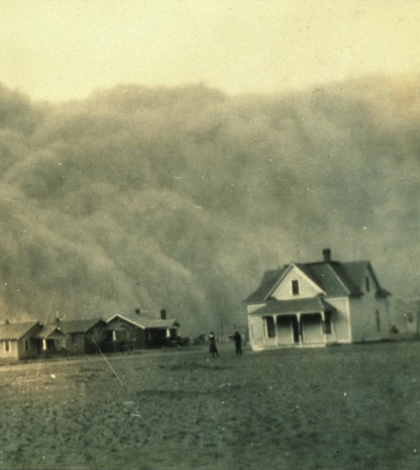Ocean Hotspots Linked To 1930s Dust Bowl

Dust storm approaching homes in Stratford, Texas. (Credit: George E. Marsh / NOAA)
Scientists with the University of South Wales report in a press release that they have found the likely cause of high temperatures that warmed the central U.S. in 1934 and 1936 and created a Dust Bowl: ocean hotspots.
In data from 1934 and 1936, researchers discovered two hotspots: one in the Pacific Ocean going from the Gulf of Alaska to Los Angeles and another in the Atlantic Ocean off the coast of Maine and Nova Scotia. Together, the two hotspots reduced spring rainfalls and created ideal conditions for extremely hot temperatures to develop in the central U.S.
The heat records created at the time stand to this day and the strength of the unusual 1934 and 1936 ocean hotspots has never been replicated. Even the high temperatures the U.S. experienced in the summers of 2011 and 2012 were found to be connected to just the Atlantic hotspot.
Researchers feel that if the twin hotspots occurred again, the effects would be worse due to global warming.
Top image: Dust storm approaching homes in Stratford, Texas. (Credit: George E. Marsh / NOAA)





0 comments